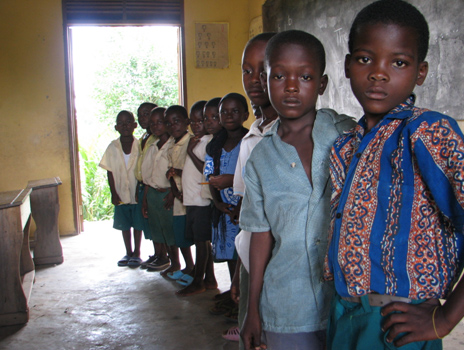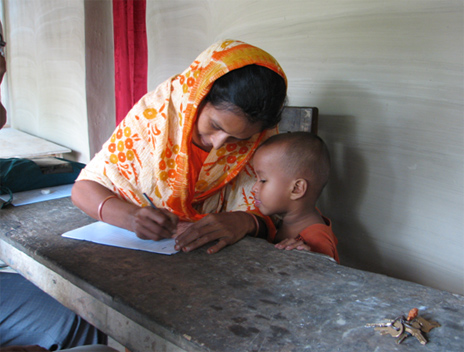Educational Access, Transitions and Equity

CREATE’s research confirms that access to education broadly defined is central to any development strategy that seeks to diminish poverty and enhance well being. Equitable access to effective and relevant education is critical for long term improvements in productivity and wellbeing. It is also enshrined as a universal human right in most countries. Education is a public good which has social benefits above the level of the individual. Poverty reduction is unlikely unless knowledge, skill and capabilities are extended to those who are marginalised from economic activity by lack of literacy, numeracy, and higher level reasoning capabilities.
In most societies households and individuals value participation in education and invest substantially in pursuing the benefits it can confer when they have the opportunity. The rich have few doubts that the investments pay off; the poor generally share the belief and recognise that increasingly, mobility out of poverty is related to educational attainment. There is no theory of development that advances the counter factual – that investment in education individually and collectively is somehow not developmental. The reasons are obvious. Knowledge and skill do transform capabilities, competencies that are acquired through education do have value in labour markets, and increasingly social selection and mobility are mediated by educational progress and qualifications. Where investment in education fails to have developmental benefits the reasons are more likely to be because what is on offer is of poor quality and low relevance, and because of market failures in employment systems, than it is because the basic propositions of human capital linked to increased knowledge and skill are untrue.
Development is inextricably linked to equity and can be considered as part of the definition of development. When inequality increases, especially where this is more than a transient, then development may be compromised since a few will benefit much more than the many. In education this may represent a loss in opportunity across populations where capability is distributed widely across social groups and between generations. If inequalities grow so also do the risks that social conflict may become more likely, capabilities will be underutilised, and individual benefit will squeeze out collective gains.
Developing societies use educational access and attainment as a primary mechanism to sort, select and confirm subsequent generations into different social and economic roles. Whether the best explanations are human capital or screening is an enduring topic of debate. Universally those with more education on average enjoy greater incomes and have higher levels of wellbeing both at the individual level and across countries. Who goes to school, and increasingly in many developing countries who goes to secondary school, is a major determinant of who will be relatively rich and who will be relatively poor.
Economic development may or may not be accelerated by greater equity in the short term. But there would seem much to lose and little to gain by long term strategies that do not seek to raise the educational level of the next generation and distribute knowledge and skill related to productivity more widely. It goes without saying that delivering rights to education is of itself developmental and contributes to greater equity.
CREATE research shows that much has been achieved within the framework provided by Education for All programmes. However, several insights stand out.
- First, an expanded vision of access is far from being achieved in many low enrolment countries where less than half the school age children complete primary school and transit to secondary
- Second, much access is compromised by high levels of over age enrolment, poor attendance, and low levels of achievement which individually and collectively can lead to silent exclusion
- Third, children who never attend school have characteristic forms of exclusion often linked to other marginalisations; children who have reached the age of ten without attending school are very unlikely to ever enrol
- Fourth, increasingly those out of school are those who enrol but subsequently drop out; the needs of those out of school have to be addressed alongside action to reduce drop out from future cohorts
- Fifth, poverty remains the most common factor associated with exclusion; gender, disability, HIV status, social group affiliation, location and many other exclusions may interact with poverty and need addressing in ways that recognise the interactions
- Sixth, physical infrastructure often falls far short of that needed to provide a secure, healthy and appropriate learning environment
- Seventh, learning materials vary widely in availability and quality but are central to achievement of learning outcomes
- Eighth, teacher supply and deployment are widely inefficient and compromise effective and equitable access to education
- Ninth, there are characteristic differences between high and low enrolment systems that signpost more and less effective practices.
- Tenth, indicators used for performance management at system level need to be fit for purpose and coupled to data collection and analysis that monitors progress and identifies opportunities for improvement.

In 2015 many countries will achieve the two Millennium Development Goals linked to education if these are narrowly defined. Many more will not achieve the CREATE expanded vision of access. But it is realising this expanded vision that will determine the impact of improved access on development. On-schedule progression with few overage children could lead to dramatic increases in completion rates especially for girls. Poor attendance of children and teachers requires community and school level actions and incentives. Poor achievement should not of itself be reason for drop out but an invitation to identify the causes and act to ameliorate them. There are no good reasons why all children do not learn to read and write, and achieve within two grade levels of national norms.
In the run up to the reviews of the Millennium Development Goals in 2015, new goals and time bound targets for educational participation and outcomes were set for 2025 and beyond. Such targets and goals should be more than a list, and more like a recipe that can be tailored to different starting points and realistic rates of progress. They must link to development strategies rather than be free standing aspirations with no necessary connection to likely flows of resources and the capacity to implement programmes on scale designed to achieve goals.
New targets and goals need to recognise that access is more than enrolment, that quality, equity and outcomes are inseparable from meaningful access, and that most of what needs to be known to universalise educational access and achieve basic learning outcomes for all is known. The problem is to couple this with robust diagnoses of the bottlenecks that inhibit progress, understand the lessons that can be learned from changing patterns of access in the past, mobilise the resources and build the capacity needed, and engage effectively with the political economy of development which will determine how much longer it will take to make a reality of Education for All.